Germany
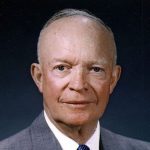 Some nations really can’t be trusted with weapons of mass destruction. They are eager to start a war, and they don’t have the moral scruples necessary to care about the loss of life involved. When nuclear weapons began to be produced, nations like the Soviet Union, China, Germany, Iran, Iraq, and various others, simply couldn’t be trusted with these weapons, but it was difficult to stop them from developing them, just like it is today. Therefore, nations have had to develop ways to restrict the usage of these weapons.
Some nations really can’t be trusted with weapons of mass destruction. They are eager to start a war, and they don’t have the moral scruples necessary to care about the loss of life involved. When nuclear weapons began to be produced, nations like the Soviet Union, China, Germany, Iran, Iraq, and various others, simply couldn’t be trusted with these weapons, but it was difficult to stop them from developing them, just like it is today. Therefore, nations have had to develop ways to restrict the usage of these weapons.
On July 21, 1955, President Dwight D Eisenhower presented his “Open Skies” plan at the 1955 Geneva summit meeting with Prime Minister Anthony Eden of Great Britain, Premier Edgar Faure of France, and Premier Nikolai Bulganin of the Soviet Union…acting for Soviet leader Nikita Khrushchev, in Geneva in July 1955, to present the plan. The plan was never accepted, but it laid the foundation for President Ronald Reagan’s “Trust, But Verify” policy in relation to arms agreements with the Soviet Union. The planned agenda for the summit included discussions on the future of Germany and arms control, but as it became clear that no agreement could be  reached on the issue of possible German reunification or the precise configuration of an arms control agreement, considering what had happened in Germany after World War I, Eisenhower dramatically unveiled what came to be known as his “Open Skies” proposal. The proposal called for the United States and the Soviet Union to exchange maps indicating the exact location of every military installation in their respective nations. The purpose of the maps was to allow each nation to conduct aerial surveillance of the installations in order to assure that the other nations were in compliance with any arms control agreements that might be reached. While it sounded like a good idea, it had little chance of acceptance. The French and British expressed interest in the idea, but the Soviets rejected any plan that would leave their nation subject to surveillance by a Western power. Khrushchev declared that Eisenhower’s “Open Skies” was nothing more than an “espionage plot.”
reached on the issue of possible German reunification or the precise configuration of an arms control agreement, considering what had happened in Germany after World War I, Eisenhower dramatically unveiled what came to be known as his “Open Skies” proposal. The proposal called for the United States and the Soviet Union to exchange maps indicating the exact location of every military installation in their respective nations. The purpose of the maps was to allow each nation to conduct aerial surveillance of the installations in order to assure that the other nations were in compliance with any arms control agreements that might be reached. While it sounded like a good idea, it had little chance of acceptance. The French and British expressed interest in the idea, but the Soviets rejected any plan that would leave their nation subject to surveillance by a Western power. Khrushchev declared that Eisenhower’s “Open Skies” was nothing more than an “espionage plot.”
The truth is that “Open Skies” was definitely not an “espionage plot,” but then we all knew that. Eisenhower was later quoted as saying that he knew “the Soviets would never accept the plan, but thought that their rejection of the idea would make the Russians look like they were the major impediment to an arms control  agreement.” The problem the Soviets had was that US surveillance planes would quickly find out that the Soviet Union was far behind the United States in terms of its military capabilities. The United States soon found that out anyway, because just a few months after the Soviet rejection of “Open Skies,” the Eisenhower administration approved the use of high-altitude spy planes (the famous U-2s) for spying on the Soviet Union. Thirty years later, President Reagan would use much the same rhetoric in his arms control dealings with the Soviet Union. Arms control, he declared, could only be effective if compliance with such agreements could be verified. “Trust, but verify” became Reagan’s standard phrase, and the truth is they were both right. If these rogue nations can’t be held accountable, they will continue to develop weapons of mass destruction, even while they are in a supposed agreement not to.
agreement.” The problem the Soviets had was that US surveillance planes would quickly find out that the Soviet Union was far behind the United States in terms of its military capabilities. The United States soon found that out anyway, because just a few months after the Soviet rejection of “Open Skies,” the Eisenhower administration approved the use of high-altitude spy planes (the famous U-2s) for spying on the Soviet Union. Thirty years later, President Reagan would use much the same rhetoric in his arms control dealings with the Soviet Union. Arms control, he declared, could only be effective if compliance with such agreements could be verified. “Trust, but verify” became Reagan’s standard phrase, and the truth is they were both right. If these rogue nations can’t be held accountable, they will continue to develop weapons of mass destruction, even while they are in a supposed agreement not to.
 How could a food become a problem in a war? I mean its something you eat, not fight with. Nevertheless, during World War I, the Germans were so hated and the Third Reich was so evil, that no one among the Allies wanted anything to do with them. They didn’t even want to be associated with anything that even remotely sounded like it was German. With that in mind, the word “hamburger” came to mind. It was decided that the “hamburger” was just a little too German to be allowed to continue being served with that name. You might think that people would get mad about that, but the people were very loyal to our nation and to the cause. They couldn’t tolerate the horrific crimes against humanity they saw in front of themselves. The Germans made it very clear to the world that they were, at least will Hitler was in charge, the most horrific nation on Earth.
How could a food become a problem in a war? I mean its something you eat, not fight with. Nevertheless, during World War I, the Germans were so hated and the Third Reich was so evil, that no one among the Allies wanted anything to do with them. They didn’t even want to be associated with anything that even remotely sounded like it was German. With that in mind, the word “hamburger” came to mind. It was decided that the “hamburger” was just a little too German to be allowed to continue being served with that name. You might think that people would get mad about that, but the people were very loyal to our nation and to the cause. They couldn’t tolerate the horrific crimes against humanity they saw in front of themselves. The Germans made it very clear to the world that they were, at least will Hitler was in charge, the most horrific nation on Earth.
Because of the conflict between Germany and the rest of the world, menus were changed to purge the names of German foods from restaurant menus. The name sauerkraut became “liberty cabbage,” and hamburgers became “liberty steaks.” Frankfurters, a very German name, was also deemed unacceptable during World War I, and in some places the name was switched to “liberty sausages,” but that was one new name that didn’t quite stick…especially when someone tried the term “hot dog.” It seems almost laughable now, because why should food play such a big part in the feelings of people, but then again, in this day and age, we are facing a situation that is much the same…the current “war” against China, Italy, and Germany (once again). This war may not be one  of dropping bombs and killing people, but it is a war nevertheless…and it is just as dangerous, if not more so.
of dropping bombs and killing people, but it is a war nevertheless…and it is just as dangerous, if not more so.
After World War II, and after the disdain against the Germans faded, the hamburger reemerged. During that time, the invention claims also emerged. It is thought that the hamburger was invented between 1885 and 1904, but it is clearly the product of the early 20th century. The origin is under dispute. Some say it was invented in the United States and some say that it was invented in Germany. During the following 100 years, the hamburger spread throughout the world, and continued on until World War I when it became just a little too German.
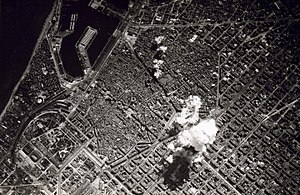 Sometimes, in researching weapons of war, and especially during World War II, I am shocked and horribly saddened by the ability of man to impose new and horrific means of death upon their enemies…simply because they disagree about how things should be run. During World War II, and possibly earlier, the killing method of Carpet bombing, also known as saturation bombing, came into practice. Carpet bombing is just what you would expect, “a large area bombardment done in a progressive manner to inflict damage in every part of a selected area of land.” Instantly, a picture of multiple explosions, the destruction of large areas of a town, or the entire town, come to mind. Mass casualties are expected. This is the way war is waged when hate reigns, but then most wars these days or even in the World War II era were filled with hate.
Sometimes, in researching weapons of war, and especially during World War II, I am shocked and horribly saddened by the ability of man to impose new and horrific means of death upon their enemies…simply because they disagree about how things should be run. During World War II, and possibly earlier, the killing method of Carpet bombing, also known as saturation bombing, came into practice. Carpet bombing is just what you would expect, “a large area bombardment done in a progressive manner to inflict damage in every part of a selected area of land.” Instantly, a picture of multiple explosions, the destruction of large areas of a town, or the entire town, come to mind. Mass casualties are expected. This is the way war is waged when hate reigns, but then most wars these days or even in the World War II era were filled with hate.
In the European Theatre, the first city to suffer heavily from aerial bombardment was Warsaw, on September 25, 1939. Achieving the results they wanted, the Germans continued this trend in warfare with the Rotterdam Blitz…an aerial bombardment of Rotterdam by 90 bombers of the German Air Force on May 14, 1940, during the German invasion of the Netherlands. The objective was to support the German assault on the city, break Dutch resistance, and force the Dutch to surrender. So in the middle of a ceasefire, they dropped the bombs anyway, destroying almost the entire historic city center, killing nearly nine hundred civilians and leaving 30,000 people homeless. That was still not enough for the Nazis. The Oberkommando der Luftwaffe (OKL) used the destructive success of the bombing to threaten to destroy the city of Utrecht, if the Dutch government did not surrender. The Dutch surrendered early the next morning.
With the actions of the Nazis, the British knew that they had to act. The Battle of Britain developed from a fight for air supremacy into the strategic and aerial bombing of London, Coventry and other British cities. The British built up the RAF Bomber Command in retaliation for the bombings, which was capable of delivering many thousands of tons of bombs onto a single target, in spite of heavy initial bomber casualties in 1940. The plan was to break German morale and obtain the surrender which Douhet had predicted 15 years earlier. Then the 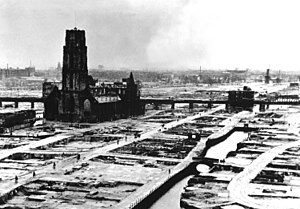 United States joined the war and the USAAF greatly reinforced the campaign, bringing in the Eighth Air Force into the European Theatre.
United States joined the war and the USAAF greatly reinforced the campaign, bringing in the Eighth Air Force into the European Theatre.
Still, that meant that the Allies would have to play the same game the Nazis had played. Many cities, both large and small, were virtually destroyed by Allied bombing. Cologne, Berlin, Hamburg and Dresden are among the most infamous, the latter two developing firestorms. I suppose the Germans finally found out what their own horrific tactics had done. Carpet bombing was also used as close air support (as “flying artillery”) for ground operations. The massive bombing was concentrated in a narrow and shallow area of the front (a few kilometers by a few hundred meters deep), closely coordinated with the advance of friendly troops. The first successful use of the technique was on May 6, 1943, at the end of the Tunisia Campaign. Carried out under Sir Arthur Tedder, it was hailed by the press as Tedder’s bomb-carpet (or Tedder’s carpet). The bombing was concentrated in a four by three-mile area, preparing the way for the First Army. This tactic was later used in many cases in the Normandy Campaign.
Carpet bombing was used extensively against Japanese civilian population centers, such as Tokyo, in the Pacific War. On the night of March, 9-10, 1945, 334 B-29 Superfortress heavy bombers were directed to attack the most heavily populated civilian sectors of Tokyo. Over 100,000 people burned to death in just one night from a heavy bombardment of incendiary bombs, comparable to the wartime number of US casualties in the entire Pacific theater. Another 100,000 to one million Japanese were left homeless. Similar attacks against Kobe, Osaka, and Nagoya, as well as other sectors of Tokyo followed, where over 9,373 tons of incendiary bombs were dropped on civilian and military targets. By the time of the dropping of the atomic bombs on Hiroshima and Nagasaki, light and medium bombers were being directed to bomb targets of convenience, because most urban areas had already been destroyed. In the 9-month long civilian bombing campaign, over 400,000 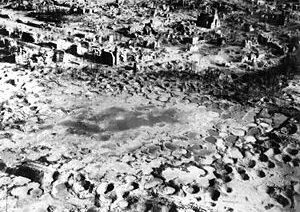 Japanese civilians died.
Japanese civilians died.
Carpet bombing of cities, towns, villages, or other areas containing a concentration of civilians is considered a war crime as of Article 51 of the 1977 Protocol I of the Geneva Conventions. Sometimes, that might make the nations think twice, but some nations, like the German Third Reich, think they can get away with anything. Hitler was crazy, and after deciding on the “Final Solution,” what is a little bit of Carpet Bombing in the mix. Carpet bombing was a horrible use of force, and in World War II and other wars since, it has taken many lives, and in the wrong hands it’s even worse.
 During World War II, there were hundreds of thousands, if not millions, of bombs dropped across Europe. There is no way to know where they were dropped, or if they actually exploded, or worse yet, if they are still lurking beneath the surface waiting to detonate. Princess Diana was a champion of a similar cause, but she was concerned about landmines…just as deadly, but a different deployment. Both concerns are real, and both situations are deadly. One German bomb specialist said that the problem will haunt Europe for centuries, saying, “There will still be bombs 200 years from now.”
During World War II, there were hundreds of thousands, if not millions, of bombs dropped across Europe. There is no way to know where they were dropped, or if they actually exploded, or worse yet, if they are still lurking beneath the surface waiting to detonate. Princess Diana was a champion of a similar cause, but she was concerned about landmines…just as deadly, but a different deployment. Both concerns are real, and both situations are deadly. One German bomb specialist said that the problem will haunt Europe for centuries, saying, “There will still be bombs 200 years from now.”
One such example is that of the German town of Limberg, whose residents woke up to a startling sight on the morning of June 23, 2019. A crater in a field as large as a house. The explosion was caused by a leftover bomb from World War II. Unexploded bombs really are a huge problem in Germany and other European countries, because these long-buried weapons periodically surface or spontaneously explode. No one knows when it might happen and the aftermath can be devastating. The explosion occurred in the central German town of Ahlbach, just north of Frankfurt. Residents reported hearing and feeling a large explosion in the early morning hours of Sunday the 23rd, but no one actually saw the explosion occur. During a follow-up the next day, they found a crater 33 feet wide and 14 feet deep in the middle of a barley field. It was determined that a decomposing bomb detonator for the explosion.
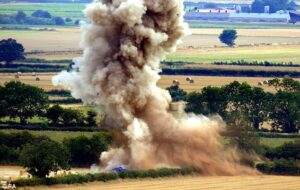
According to the BBC, “explosive ordnance demolition teams concluded that the explosive device was a 551 pound aerial bomb dropped by the Allies during World War II. The bomb was likely a M43, AN-M43, or AN-M64 500 pound general purpose bomb. General purpose bombs at terminal velocity will penetrate 3-4 building stories before detonating, so it’s not surprising this bomb buried itself so well.”
“The M65 was five feet long and 14 inches wide, and carried a payload of 280 pounds of TNT. The bomb casing, designed to produce fragment into lethal shrapnel, was .3 inches thick. An explosive ordnance disposal guidebook describes their purpose as to destroy ‘steel railway bridges, underground railways, sea craft such as light cruisers, concrete docks, medium sized buildings, etc.’”
During World War II, Germany operated several facilities in areas important to the war effort, including Limburg Field and an important railroad junction and marshaling yard. Allied bombs were dropped during the war, but often missed by miles. Falling at a high rate of speed, that morning’s bomb buried itself in the soft soil and  remained undetected for decades. Whoever cultivated the barley field obviously had no idea 280 pounds of highly unstable explosives lurked underneath, and thankfully no one was hurt
remained undetected for decades. Whoever cultivated the barley field obviously had no idea 280 pounds of highly unstable explosives lurked underneath, and thankfully no one was hurt
Seventy five years after the end of World War II, unexploded bombs are still a huge problem not only in Germany, but across all of Europe. The explosions don’t happen often, but when one explodes the results can be devastating. Governments are trying to find these bombs. Experts drill holes and look for bombs using magnetometers, searching for the signature of a bomb’s steel casing. Then they defuse or explode them harmlessly.

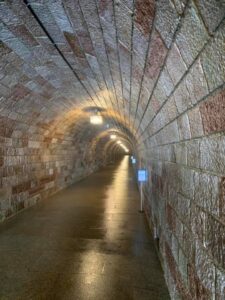 A few days ago, my friends, Rikki and Tony Ramsey (who is stationed in Germany) and their three sons, Jameson, Jackson, and Jordan posted some pictures of a trip they took to Salzburg, Austria. On the way there, they went to a place in the mountains, and posted pictures of them in front of a large cross. It was the cross that caught my eye, but the story of the place that held my interest. In English the place is called the Eagle’s Nest, but in German it is the Kehlsteinhaus and it is a building and cross erected by the Third Reich atop the summit of the Kehlstein, a rocky outcrop that rises above Obersalzberg near the town of Berchtesgaden. This was not a church or a fancy mountain-top resort or restaurant…at least not then. It was used exclusively by members of the Nazi Party for government and social meetings, and was visited on 14 documented instances by Adolf Hitler, who disliked the location due to his fear of heights, the risk of bad weather, and the thin mountain air. Today, the building is owned by a charitable trust and is open seasonally to the public as a restaurant, beer garden, and tourist site. I’m sure Hitler would be furious about that.
A few days ago, my friends, Rikki and Tony Ramsey (who is stationed in Germany) and their three sons, Jameson, Jackson, and Jordan posted some pictures of a trip they took to Salzburg, Austria. On the way there, they went to a place in the mountains, and posted pictures of them in front of a large cross. It was the cross that caught my eye, but the story of the place that held my interest. In English the place is called the Eagle’s Nest, but in German it is the Kehlsteinhaus and it is a building and cross erected by the Third Reich atop the summit of the Kehlstein, a rocky outcrop that rises above Obersalzberg near the town of Berchtesgaden. This was not a church or a fancy mountain-top resort or restaurant…at least not then. It was used exclusively by members of the Nazi Party for government and social meetings, and was visited on 14 documented instances by Adolf Hitler, who disliked the location due to his fear of heights, the risk of bad weather, and the thin mountain air. Today, the building is owned by a charitable trust and is open seasonally to the public as a restaurant, beer garden, and tourist site. I’m sure Hitler would be furious about that.
The Kehlsteinhaus is located on a ridge atop the Kehlstein, a 6,017 feet subpeak of the Hoher Göll that rises above the town of Berchtesgaden. It construction was commissioned by Martin Bormann in the summer of 1937, and paid for by the Nazi Party. It took 13 months to complete, and whether is was the speed of its construction, or simply poor safety standards, twelve workers died during its construction. The road to Kehlsteinhaus is 13 feet wide and climbs 2,600 feet over 4 miles. To get to Kehlsteinhaus, the road goes through five tunnels and one hairpin turn. The road cost RM 30 million to build (about €150 million inflation-adjusted for 2007), which equals about 180,450,000 US dollars. Hitler’s birthday in April 1939 was considered a deadline for the project’s completion, so work continued throughout the winter of 1938, even at night with the worksite lit by searchlights. That explains the twelve deaths, I suppose.
Once you arrive, there is a large car park. From there, a 407 feet entry tunnel leads to an ornate elevator that ascends the final 407 feet to the building. Even the tunnel was elaborate. It was lined with marble and was originally heated, with warm air from an adjoining service tunnel. Most people walked into the elevator, but visiting high-officials were commonly driven through the tunnel to the elevator. Since the tunnel was to narrow to turn around, the driver then had to reverse the car for the entire length of the tunnel. The elevator was elaborate too, of course. The inside was surfaced with polished brass, Venetian mirrors, and green leather. The building’s main reception room is dominated by a fireplace of red Italian marble presented by Italian dictator Benito Mussolini, which was damaged by Allied soldiers chipping off pieces to take home as souvenirs. Hitler had the best of everything in the building. Unusual for 1937, the building had a completely electric appliance 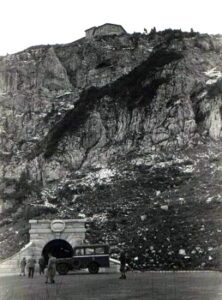
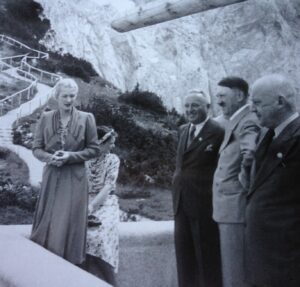 kitchen, but it was never used to cook meals…instead meals were prepared in town and taken to the kitchen on the mountain top to be reheated. Another extravagancy was the heated floors, with heating required for at least two days before visitors arrived. A MAN submarine diesel engine and an electrical generator were installed in an underground chamber close to the main entrance, to provide back-up power. Much of the furniture was designed by Paul László.
kitchen, but it was never used to cook meals…instead meals were prepared in town and taken to the kitchen on the mountain top to be reheated. Another extravagancy was the heated floors, with heating required for at least two days before visitors arrived. A MAN submarine diesel engine and an electrical generator were installed in an underground chamber close to the main entrance, to provide back-up power. Much of the furniture was designed by Paul László.
Hitler first visited on September 16, 1938, and returned to inaugurate it on April 20, 1939, his 50th birthday…though supposedly, it was not intended as a birthday gift. There are two ways to approach and enter the building…the road and the Kehlsteinhaus elevator. Hitler did not trust the elevator, continually expressed his reservations of its safety, and disliked using it. His biggest fear was that the elevator’s winch mechanism on the roof would attract a lightning strike. Bormann took great pains to never mention the two serious lightning strikes that occurred during construction. For a man who was supposedly such a “brave leader,” Hitler sure was afraid of a lot of things. The Kehlsteinhaus lies several miles directly above the Berghof, Hitler’s summer home. In a rare diplomatic engagement, Hitler received departing French ambassador André François-Poncet on October 18, 1938, there. It was he who actually came up with the name “Eagle’s Nest” for the building while later describing the visit. Since then, the name has remained. A wedding reception for Eva Braun’s sister Gretl was held there following her marriage to Hermann Fegelein on June 3, 1944. While Hitler more often than not left the entertaining duties to others, he believed the house presented an excellent opportunity to entertain important and impressionable guests. Often referred to as the “D-Haus,” short for “Diplomatic Reception House,” the Kehlsteinhaus is often combined with the teahouse on Mooslahnerkopf Hill near the Berghof, which Hitler walked to daily after lunch. Later, after the war, the teahouse was demolished by the Bavarian government, due to its connection to Hitler.
The Allies tried to bomb the Kehlsteinhaus in the April 25, 1945 Bombing of Obersalzberg, but the little house did not make an easy target for the force of 359 Avro Lancasters and 16 de Havilland Mosquitoes, which were sent to bomb Kehlsteinhaus, but instead, severely damaged the Berghof area. Undamaged in the April 25 bombing raid, the Kehlsteinhaus was subsequently used by the Allies as a military command post until 1960, when it was handed back to the State of Bavaria. The road to the Kehlsteinhaus has been closed to private vehicles since 1952 because it is too dangerous, but the house can be reached on foot (in two hours) from Obersalzberg, or by bus from the Documentation Center there. The Documentation Centre currently directs visitors to the coach station where tickets are purchased. The buses have special modifications to take on a 
 slight angle, as the steep road leading to the peak is too steep for regular vehicles. The Kehlsteinhaus itself does not mention much about its past, except in the photos displayed and described along the wall of the sun terrace that documents its pre-construction condition until now. The lower rooms of the structure are not part of the restaurant but can be visited with a guide. They offer views of the building’s past through plate-glass windows, including graffiti left by Allied troops that is still visible in the surrounding woodwork. The red Italian marble fireplace remains damaged by Allied souvenir hunters, though this was later halted by signage posted that the building was US government property, and damage to it was cause for disciplinary action. Hitler’s small study is now a storeroom for the cafeteria. Thanks to the Ramsey family for taking us along.
slight angle, as the steep road leading to the peak is too steep for regular vehicles. The Kehlsteinhaus itself does not mention much about its past, except in the photos displayed and described along the wall of the sun terrace that documents its pre-construction condition until now. The lower rooms of the structure are not part of the restaurant but can be visited with a guide. They offer views of the building’s past through plate-glass windows, including graffiti left by Allied troops that is still visible in the surrounding woodwork. The red Italian marble fireplace remains damaged by Allied souvenir hunters, though this was later halted by signage posted that the building was US government property, and damage to it was cause for disciplinary action. Hitler’s small study is now a storeroom for the cafeteria. Thanks to the Ramsey family for taking us along.
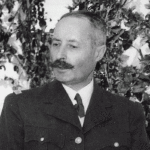
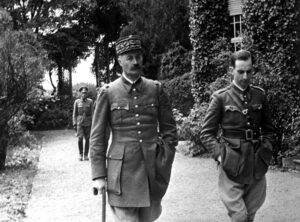 Henri Honoré Giraud was a French general and a leader of the Free French Forces during the Second World War until he was forced to retire in 1944. Giraud was born on January 18, 1879 the son of Louis and Jeanne (née Deguignand) Giraud. His father was a coal merchant. Born to an Alsatian family in Paris, Giraud graduated from the Saint-Cyr military academy and served in French North Africa. During World War I, Giraud was wounded and captured by the Germans, but managed to escape from his prisoner-of-war camp. It was the first time he escaped, but not the last. After World War I ended, Giraud returned to North Africa and fought in the Rif War. During that war, he was awarded the Légion d’honneur. The Légion d’honneur (or Legion of Honour) is the highest French order of merit, both military and civil. It was established in 1802 by Napoleon Bonaparte, and it has been retained by all later French governments and régimes.
Henri Honoré Giraud was a French general and a leader of the Free French Forces during the Second World War until he was forced to retire in 1944. Giraud was born on January 18, 1879 the son of Louis and Jeanne (née Deguignand) Giraud. His father was a coal merchant. Born to an Alsatian family in Paris, Giraud graduated from the Saint-Cyr military academy and served in French North Africa. During World War I, Giraud was wounded and captured by the Germans, but managed to escape from his prisoner-of-war camp. It was the first time he escaped, but not the last. After World War I ended, Giraud returned to North Africa and fought in the Rif War. During that war, he was awarded the Légion d’honneur. The Légion d’honneur (or Legion of Honour) is the highest French order of merit, both military and civil. It was established in 1802 by Napoleon Bonaparte, and it has been retained by all later French governments and régimes.
When World War II began, Giraud was a member of the Superior War Council. He strongly disagreed with Charles de Gaulle about the tactics of using armored troops that were planned. Giraud was made the commander of the 7th Army when it was sent to the Netherlands on May 10, 1940. He was able to delay German troops at Breda on May 13th. The badly depleted 7th Army was then merged with the 9th Army. While the troops were trying to block a German attack through the Ardennes, Giraud was at the front with a reconnaissance patrol when he was captured by German troops at Wassigny on May19th. A German court-martial tried Giraud for ordering the execution of two German saboteurs wearing civilian clothes, but he was acquitted and taken to Königstein Castle near Dresden, which was used as a high-security POW prison. He would be held there for two years.
Not one to just sit around, Giraud began carefully planning his escape. He learned German and memorized a map of the area. He painstakingly made a 150 feet rope out of twine, torn bedsheets, and copper wire, which friends had smuggled into the prison for him. Using a simple code embedded in his letters home, he informed his family of his plans to escape. I doubt if they were surprised, as it would not be the first time he escaped his captors. Finally on April 17, 1942, he was ready. Königstein Castle was built on a hilltop, with steep cliff on one side. After shaving off his moustache and covering his head with a Tyrolean hat to disguise himself, Giraud lowered himself down the cliff of the mountain fortress. He discretely travelled to Schandau where he met his Special Operations Executive (SOE) contact, who provided him with a change of clothes, cash, and identity papers. Thus began the series of tactics designed to get Giraud to the Swiss border by train. By now, the border guards had been informed of his escape and were on the alert for him. Giraud walked through the mountains until he was stopped by two Swiss soldiers, who took him to Basel. Eventually, he was able to slip into Vichy France, where he was finally able to make his identity known. He tried unsuccessfully to convince Marshal Pétain that Germany would lose, and that France must resist the German occupation. His views were rejected, but at least the Vichy government refused to return Giraud to the Germans. Returning him would have been a death sentence, because Hitler had ordered Giraud’s assassination upon being caught. Giraud went to North Africa via a British submarine, and joined the French Free Forces under General Charles de Gaulle. He eventually helped to rebuild the French army.
In January 1943, Giraud took part in the Casablanca Conference along with Charles de Gaulle, Winston Churchill, and Franklin D Roosevelt. Later in the same year, Giraud and de Gaulle became co-presidents of the French Committee of National Liberation, but Giraud lost support and retired in frustration in April 1944. After 
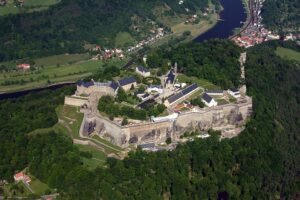 the war, Giraud was elected to the Constituent Assembly of the French Fourth Republic. He remained a member of the War Council and was decorated for his escape. He published two books, “Mes Evasions” (My Escapes, 1946) and “Un seul but, la victoire”: Alger 1942–1944 (A Single Goal, Victory: Algiers 1942–1944, 1949) about his experiences. He died in Dijon on March 11, 1949.
the war, Giraud was elected to the Constituent Assembly of the French Fourth Republic. He remained a member of the War Council and was decorated for his escape. He published two books, “Mes Evasions” (My Escapes, 1946) and “Un seul but, la victoire”: Alger 1942–1944 (A Single Goal, Victory: Algiers 1942–1944, 1949) about his experiences. He died in Dijon on March 11, 1949.
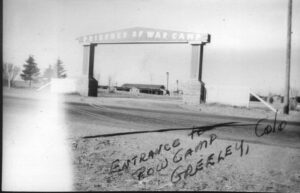 For some reason, when I think of Prisoner of War (POW) camps, I think of a place far away in a war zone, and there were some there, but as they filled up, the prisoners had to be moved to other areas. In addition to that, we needed men to work in the United States because our men were overseas fighting. The prisoners could be put to work in the fields to help grow needed foods for the country, as well as the troops. That idea was a bit foreign to me, especially when I heard that there was just such a camp that was practically in my backyard…even if I wasn’t born at the time. It’s just odd when history collides with your own neighborhood.
For some reason, when I think of Prisoner of War (POW) camps, I think of a place far away in a war zone, and there were some there, but as they filled up, the prisoners had to be moved to other areas. In addition to that, we needed men to work in the United States because our men were overseas fighting. The prisoners could be put to work in the fields to help grow needed foods for the country, as well as the troops. That idea was a bit foreign to me, especially when I heard that there was just such a camp that was practically in my backyard…even if I wasn’t born at the time. It’s just odd when history collides with your own neighborhood.
During World War II, the Greeley, Colorado POW camp had prisoners from Germany and Austria. The camp was built in 1943, and the first prisoners came in 1944. The camp was a self-contained town in itself. It had a fire station, hospital, theater, library, and classrooms. It also had electricity, water, and sewers. The prisoners who were held in the POW camps in the United States were treated well. This country wasn’t into the torture methods that the Axis of Evil nations were.
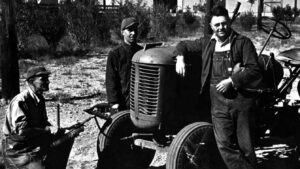
Many of the prisoners worked in the fields and paid money, for their labor, to take home with them. They were also given the chance to have fun. They had soccer teams. They dyed their t-shirts different colors using homemade dyes from vegetables. They had classes in English, German, and Mathematics. Some men were in the camp orchestra and others sang in choir. In many ways, the lives these men lived in the POW camps was better than the lives they lived at home…or at least during the war.
The Greeley POW Camp 202, was almost like a coveted assignment. It was the place the prisoners wanted to be sent. When new prisoners came to the camp, they would try to find men from their hometowns…hoping others had been as blessed as they felt to be there. The story is told that, “The old prisoners would toss out gum or paper with their names and address. One day a father and son found each other from the tossed notes.” These reunions were such a blessing for the prisoners. The guards were well liked. In fact, when one of the guards got married, the prisoners cooked their wedding night dinner for them. These good guards found favor with the prisoners.
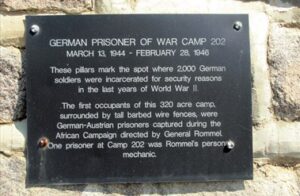
I like to think that POW camps in and run by the United States were and are more civilized than those camps owned and run by other countries, but I don’t suppose all of them were run as compassionately as the Greeley POW Camp. We hear nightmare stories of Guantanamo Bay, and I’m sure there are others that weren’t so great. Still, I suppose things depend on the prisoners to a great degree. It is harder to show kindness to a prisoner who orchestrates a terrorist attack against our nation, killing thousands of innocent people, that it is to be compassionate to a soldier who is simply following orders, but is otherwise a kind and gentle person.
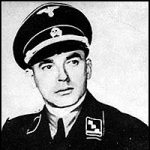
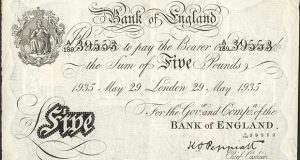 When we think of the weapons of warfare, we think of guns, planes, tanks, and such, but there are weapons of warfare that while seemingly far less lethal, are still deadly…in other ways. Economic warfare is something I would never have considered, even though it makes perfect sense. The Germans in World War II thought of every possible weapon, or very close to it. If a nation has no money to bankroll a war, they are very likely going to lose. That was the position that Germany wanted to put Great Britain in during World War II. They decided on an age-old plan…if you’re a criminal that is. Counterfeiting money to tank the economy.
When we think of the weapons of warfare, we think of guns, planes, tanks, and such, but there are weapons of warfare that while seemingly far less lethal, are still deadly…in other ways. Economic warfare is something I would never have considered, even though it makes perfect sense. The Germans in World War II thought of every possible weapon, or very close to it. If a nation has no money to bankroll a war, they are very likely going to lose. That was the position that Germany wanted to put Great Britain in during World War II. They decided on an age-old plan…if you’re a criminal that is. Counterfeiting money to tank the economy.
The year was 1942 and for the purpose of artificially causing inflation of the British pound, leading to the economic collapse of the competition, while simultaneously funding some of their own projects, the production of the British “White Notes” was about to start. It would not start in Britain, however. These “White Notes” would be made behind the gates of Sachsenhausen concentration camp. The Germans decided to begin counterfeiting British banknotes. These tactics were considered particularly wrong by the German soldiers themselves, basically sneaky and unprofessional. However, soon after World War II, it became common practice for different countries to counterfeit the currency of their opposition in times of war. Evil knows no bounds.
The first attempt at counterfeiting, known as Operation Andrew, failed because of disagreements between top brass inside of the Nazi Party. Friederich Walter Bernhard Krueger was placed in charge of Germany’s second attempt at counterfeiting British notes. The second operation’s codename was Bernhard because that is what Krueger was called. In preparation for the production, Bernhard assembled a team of about 140 men/prisoners. Some historians have suggested that it was as many as 300. These men were told they would receive better treatment and special perks like radio, newspapers, warm barracks, if they participated in the operation. The men had nothing to lose. All they had to do was counterfeit 400,000 British banknotes a month.
After a year of hard work, and the prisoners finally successfully counterfeited the British White Note. By 1945, conservative estimates figure 70,000,000 notes were printed by the inmates. It was a cache worth upwards of £100,000,000. In order to complete this herculean task, the team of counterfeiters studied vast quantities of authentic White Notes. They broke this massive task up into seven smaller tasks, each one seemingly more difficult than the last. “These tasks included: Discovering secret security marks, Engraving the vignette, Perfecting the paper, Creating identical ink, Solving the serial numbering system, Re-creating the signatures, dates and places of origin, and Printing the notes. The men found no fewer than 150 different security marks hidden on the White Notes. There were intentional minor defects and flaws that the Bank of England incorporated as anti-counterfeiting devices. To make things even harder, these security devices were different for each denomination. Nonetheless, in short order, the counterfeit team produced a plate for each denomination: £5, £10 £20 and £50.” The plan was coming together and soon they were ready to execute it.
The plan was to fly over and drop the counterfeit money from the planes. Once it was laundered and in the hands of the people, they could spend it and because there was no real backing for the money, the economy would tank. The operation went on for a time, but with the late February and early March 1945 advance of the Allied armies, all production of notes at Sachsenhausen ceased. The equipment and supplies were packed and transported, with the prisoners, to the Mauthausen-Gusen concentration camp in Austria, arriving on 12 March. 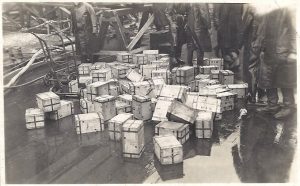
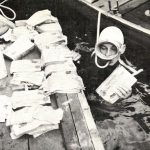 They had to hide the evidence. They didn’t give up on the process, however. Shortly afterwards Krüger arranged a transfer of the equipment to the Redl-Zipf series of tunnels so production could be restarted. The order to resume production was soon rescinded, however, and the prisoners were ordered to destroy the cases of money they had with them. The equipment and any money not burned was loaded onto trucks and sunk in the Toplitz and Grundlsee lakes.
They had to hide the evidence. They didn’t give up on the process, however. Shortly afterwards Krüger arranged a transfer of the equipment to the Redl-Zipf series of tunnels so production could be restarted. The order to resume production was soon rescinded, however, and the prisoners were ordered to destroy the cases of money they had with them. The equipment and any money not burned was loaded onto trucks and sunk in the Toplitz and Grundlsee lakes.
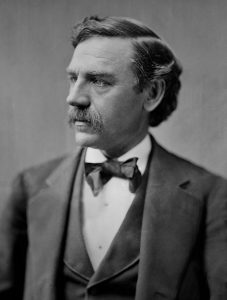 As is common with ships, the William P. Frye was a four-masted steel barque named after a US Republican politician of the same name, from the state of Maine. The ship was built by Arthur Sewall and Co of Bath, Maine in 1901. For a time, the ship had a great run…until 1915, that is. The ship sailed from Seattle, Washington on November 4, 1914, with a cargo of 189,950 US bushels of wheat. The ship and its cargo were bound for Queenstown, Falmouth, or Plymouth in the United Kingdom. In 1915 the United Kingdom was at war with Imperial Germany, but the United States was not enter the war yet and was officially neutral. It was early in the war, but that doesn’t make it any less dangerous to sail the high seas.
As is common with ships, the William P. Frye was a four-masted steel barque named after a US Republican politician of the same name, from the state of Maine. The ship was built by Arthur Sewall and Co of Bath, Maine in 1901. For a time, the ship had a great run…until 1915, that is. The ship sailed from Seattle, Washington on November 4, 1914, with a cargo of 189,950 US bushels of wheat. The ship and its cargo were bound for Queenstown, Falmouth, or Plymouth in the United Kingdom. In 1915 the United Kingdom was at war with Imperial Germany, but the United States was not enter the war yet and was officially neutral. It was early in the war, but that doesn’t make it any less dangerous to sail the high seas.
When the ship was near the coast of Brazil, the Imperial German Navy raider SMS Prinz Eitel Friedrich overtook the William P. Frye on January 27, 1915. The Germans stopped and boarded the ship. I can’t imagine what it must have been like to have an enemy navy detain a ship I was on. You just never know what they are going to do. The William P. Frye was owned by the United States, and so a neutral ship. The ship should have been treated 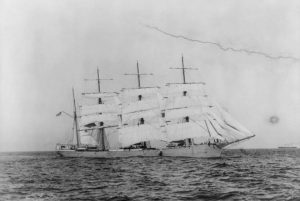 as neutral. The problem the William P. Frye had is that the cargo was deemed a legitimate war target because the Germans believed it was bound for Britain’s armed forces. In reality, even detaining the ship was probably an act of war, but that never seemed to bother the Germans anyway.
as neutral. The problem the William P. Frye had is that the cargo was deemed a legitimate war target because the Germans believed it was bound for Britain’s armed forces. In reality, even detaining the ship was probably an act of war, but that never seemed to bother the Germans anyway.
Upon making his decision that the William P. Frye was a legitimate target, the captain of SMS Prinz Eitel Friedrich, Max Thierichens, ordered that William P. Frye’s cargo of wheat be thrown overboard. The captain and crew began to comply, most likely begrudgingly, and when the orders were not followed fast enough, he took the ship’s crew and passengers prisoner. Then he ordered the ship scuttled on January 28, 1915. The William P. Frye was the first American vessel sunk during World War I, and the United States wasn’t even in the war yet. The 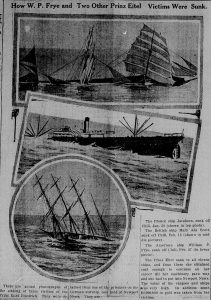 owners of the ship, Arthur Sewall and Co, wanted damages for the sinking of the ship and presented a claim for $228,059.54, which would total $5,763,800 today. In all, the SMS Prinz Eitel Friedrich scuttled eleven ships during their reign of terror. They stole coal and gold from their victims, which kept them going for a while, until they developed engine trouble.
owners of the ship, Arthur Sewall and Co, wanted damages for the sinking of the ship and presented a claim for $228,059.54, which would total $5,763,800 today. In all, the SMS Prinz Eitel Friedrich scuttled eleven ships during their reign of terror. They stole coal and gold from their victims, which kept them going for a while, until they developed engine trouble.
In another act of war, Thierichens took the passengers and the crew captive. Women and children, were part of approximately 350 people taken prisoner from eleven different ships that SMS Prinz Eitel Friedrich’s crew had searched and destroyed. I suppose the possible act of war was somewhat forgiven when all 350 were released on March 10, 1915, when the German raider had engine trouble, and docked Newport News, Virginia, but then again, what else could they do with them. Nevertheless, an outraged American government forced the Germans to apologize for the sinking, and of course, the SMS Prinz Eitel Friedrich was detained in port.
 Our enemies really depend on the war we are in. In World War II, Russia was on the side of the United States. While they might not have really been our ally, they weren’t really our enemy either, so I guess they were our “frienemy.” In reality, they were in just as much danger as any other member of the Allies. Germany had made a deal with them, but then invaded them anyway. World War II was a fear-filled time. It was a hard-fought war, against terrible enemies. There were times that it looked like Hitler would win, but in the end, he did not, and as far as history knows, he committed suicide, along with his wife, Eve Braun Hitler, who married him the day before.
Our enemies really depend on the war we are in. In World War II, Russia was on the side of the United States. While they might not have really been our ally, they weren’t really our enemy either, so I guess they were our “frienemy.” In reality, they were in just as much danger as any other member of the Allies. Germany had made a deal with them, but then invaded them anyway. World War II was a fear-filled time. It was a hard-fought war, against terrible enemies. There were times that it looked like Hitler would win, but in the end, he did not, and as far as history knows, he committed suicide, along with his wife, Eve Braun Hitler, who married him the day before.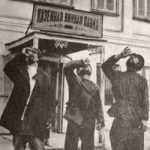
The people of the Soviet Union heard on the radio on May 9, 1945, at 1:10am, that Nazi Germany had signed the act of unconditional surrender. That surrender ended the USSR’s fight on the Eastern Front of World War II, or the Great Patriotic War as the Soviets called it. That war had been devastating consequences…according to official data, the state lost more than 26 million people. It was a great day for Russia and for the world. Hitler was dead, and the world could move forward and begin to heal. It was truly a rare case of an indestructible victory over its worst enemy, and the people of the state began a traditional method of celebration…drinking vodka and toasting to their victory.
The party began that day, May 9, 1945, and continued without ceasing for about 22 hours. People were so excitedly celebrating that they really didn’t think about their condition. They went outside in their pajamas, 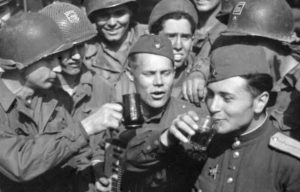 embraced, and wept with happiness. They didn’t care if they were in their pajamas, they were elated, and they partied. In fact, even non-drinkers began to drink. The party came to a screeching halt 22 hours later when the wartime deficiency of vodka, led to a unique situation. The party was in full swing, and when Joseph Stalin stepped up to address the nation in honor of the victory, the population had drunk all the vodka reserves in the country. I don’t think people really cared at that point what they toasted with. They would gladly lift a glass of water to cheer the victory. Nevertheless, how often does an entire nation run out of liquor…unless the nation is in prohibition, that is?
embraced, and wept with happiness. They didn’t care if they were in their pajamas, they were elated, and they partied. In fact, even non-drinkers began to drink. The party came to a screeching halt 22 hours later when the wartime deficiency of vodka, led to a unique situation. The party was in full swing, and when Joseph Stalin stepped up to address the nation in honor of the victory, the population had drunk all the vodka reserves in the country. I don’t think people really cared at that point what they toasted with. They would gladly lift a glass of water to cheer the victory. Nevertheless, how often does an entire nation run out of liquor…unless the nation is in prohibition, that is?

